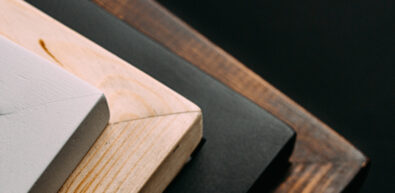Table of Contents
Are you someone who has lost faith in furniture polish that promises a lot but delivers nothing? If that’s the case, have you ever wondered if there is a natural alternative to furniture polish that nourishes your furniture and make it look beautiful?
That magical alternative is linseed oil! Now, before you say “lin-what?” let me assure you that it’s not something that you need to call an exterminator for. Linseed oil has been used by furniture enthusiasts for centuries due to its exceptional ability to preserve the wood.
In this article, we will analyze if linseed oil is good for furniture and also teach you how to use it on furniture.
What is linseed oil?
Linseed oil is 100% natural oil that is produced from flax plant seeds.
For centuries, people have been using linseed oil as a finish for wooden products. The reason is that this oil can deeply penetrate the wood and protect it from damage caused by water and wear and tear. Moreover, it is a cakewalk to apply linseed oil on furniture. Linseed oil is a popular option for do-it-yourself furniture projects because of how simple it is to apply.
On the other hand, some people avoid using linseed oil because its drying time is longer. And, it might become yellower over time and also attract dust and dirt.
Overall, linseed oil is a reliable and effective option for finishing furniture.
What are the advantages of using linseed oil on wood furniture?
Here are the perks of using linseed oil on wood furniture:
1. Linseed oil offers natural protection to the furniture.
The moment you apply linseed oil to wooden furniture, it penetrates deep into the wood and strengthens it. This helps protect the furniture against damage from wear and tear, warping, cracking, and water.
Especially if you have outdoor furniture, applying linseed oil can help protect it from damage caused by harsh outdoor conditions.
2. Linseed oil amplifies the attractiveness of furniture.
The natural grain and color of wood furniture often fade away with time due to excess usage and wear and tear.
Linseed oil penetrates deep into the wood and highlights its original grain and color once again.
This enhances the natural beauty of your furniture and makes it look fresh.
3. Linseed oil is non-toxic.
Linseed oil is non-toxic for humans, pets, and nature. You can apply it on your wooden furniture and it will not have any harmful effects on your health or the environment. It is also a safe choice for furniture used by children and pets.
4. Applying linseed oil is so much easier
When it comes to applying linseed oil on furniture, you don’t need to hire a professional for it because the process is straightforward.
A clean cloth, brush, or spray bottle is all you need to apply it on furniture.
5. Linseed oil is versatile.
Linseed oil has great versatility. It can not only be applied on all sorts of wooden furniture but also floors and countertops. Moreover, you can create custom finishes by blending linseed oil with other natural oils and ingredients.
What are the disadvantages of applying linseed oil on wood furniture?
The following are the top five drawbacks to using linseed oil on furniture:
1. Linseed oil might take ages to completely dry.
The major reason why some furniture enthusiasts hate to use linseed oil on furniture is that it takes ages to dry.
You will have to wait for one week or more so the oil gets 100% dried. After that, you can use the furniture item.
Therefore, if you are applying multiple coats or you want to use the furniture instantly after applying linseed oil, this might be of huge concern to you.
2. The smell of linseed oil
Although the smell of linseed oil diminishes once the oil dries, it can still be unpleasant for some people, especially those sensitive to smells.
To prevent this, avoid using linseed oil in confined spaces and prefer ventilated areas.
3. Linseed oil starts yellowing with time.
After some time pass, linseed oil can start yellowing and make your furniture look a bit dark.
This can be a problem if you want your furniture to maintain a lighter outlook or if your furniture is already orange or yellow.
4. Linseed oil attracts dirt.
The tacky surface of linseed oil can attract dust and dirt, making it challenging for you to keep the furniture neat and clean.
Frequently used furniture items like chairs and tables are most affected because of this.
5. Linseed oil has high flammability
Linseed oil has extremely high flammability. You have to practice extreme caution while handling and storing linseed oil at home to prevent a mishap.
Wear gloves and use linseed oil in a properly ventilated space that is away from fire & any other source of ignition.
How do you use linseed oil on wood furniture?
Here is a guideline to help you apply linseed oil on furniture:
- Prepare the wood
Before you apply linseed oil, it is important to prepare the wood for it.
Use a wood cleaner or clean cloth to wipe the wood furniture and make sure it is completely clean. There shouldn’t be any dirt, dust, or debris on it.
- Apply the oil to the furniture
After preparing the wood furniture, it is time to apply the linseed oil.
A spray bottle, clean cloth, or brush can be used to apply thin and even layers of this oil on your furniture.
Don’t end up applying too much linseed oil because it will cause drips and uneven drying. Hence, your furniture will have a poor finish.
- Allow the oil to penetrate
Once you have covered the entire surface of the furniture with thin and even layers of linseed oil, it is time to wait.
Wait for 20 minutes so the linseed oil can penetrate deep inside the wood.
In case your furniture is porous or dry, you may need to apply additional layers of linseed oil after the first layer has soaked inside the surface.
- Remove extra residue of linseed oil
When the waiting period is over, it is time to take a clean dry cloth and remove the extra residue of linseed oil that is present on the furniture.
It is because any leftover residue of linseed oil will attract dirt and dust and make it challenging for you to keep the furniture clean.
- Leave the furniture untouched
Before you use the furniture, it is crucial to let the linseed oil completely dry.
It can take up to a week or more for the linseed oil to dry 100%. Then you’ll be able to use the furniture without worrying about anything.
- Repeat for more layers
If you feel like adding more layers of linseed oil to furniture, just follow steps 1 to step 5 in the same sequence.
- Prepare the wood.
- Apply linseed oil.
- Wait for the linseed oil to soak inside the wood.
- Clean the extra residue of linseed oil.
- Let the furniture dry.
Linseed oil FAQs
We have discussed the positives and negatives of using linseed oil on furniture in detail. Now let’s answer the questions popping up in your mind.
Is it true that linseed oil darkens wood?
Yes, linseed oil may darken wood furniture over time.
It is because linseed oil oxidizes and forms a rigid protective layer which can make the wood appear dark or yellow.
You can prevent that by applying thin and even coats and cleaning the extra residue of linseed oil after applying.
Which is better linseed oil or varnish?
It depends on your personal choice.
If you need a low sheen and natural finish to enhance the beauty of wood, linseed oil is right for you.
If you need a more glossy and durable finish, varnish might be best for you.
How many coats of linseed oil are required on the wood?
Generally, 2-3 three coats of linseed oil are enough. However, the exact amount depends on the level of protection you want to achieve and the absorption rate of wood. If wood is more porous and heavily used, it will require more layers.
Does linseed oil get darker with more coats?
Yes, keep in mind that applying more coats of linseed oil on furniture can make it look darker.
What is the time required for wood to absorb linseed oil?
It can take anywhere from 15 minutes to several hours for the wood to completely absorb linseed oil.
The exact time depends on the type of wood, its porosity, and the humidity and temperature in the surroundings.
Does linseed oil waterproof wood?
Although linseed oil can make wood waterproof to some extent and protect it from damage caused by water, it does not make the wood completely waterproof. It is because linseed oil is not a waterproofing agent.
If your goal is to make the wood 100% waterproof, you should use a dedicated waterproofing agent or perhaps try a mixture of wax and linseed oil.
Does linseed oil make wood shiny?
Yes, linseed oil can make wood shiny.
However, the intensity of shine will depend upon the number of oil layers you have applied to the wood.
Normally, linseed oil is known to give a natural low-sheen finish that makes your furniture beautiful.
How long does it take for linseed oil to dry?
It can take linseed oil 24 to 72 hours to dry. In rare circumstances, drying could take a week or longer. The weather conditions (temperature & humidity) and the number of coatings used, all affect drying time.
Is linseed oil expensive?
No, linseed oil is a very affordable choice for wood finishing.
You can get it from local hardware stores or online retailers like Amazon for $6 to $22 depending on the size of the bottle.
Linseed oil vs. boiled linseed oil
The basic difference between both is that raw linseed oil takes longer to dry.
On contrary, boiled linseed oil takes less time to dry. Why? It’s because hot air is blown through the liquid which cuts short the drying period.
Which is better, boiled linseed oil or linseed oil?
Boiled linseed oil is considered better than linseed oil because it goes through a heating process that reduces its drying time. So its application becomes easier.
However, boiled linseed oil does contain metallic dryers and solvents which can cause health problems if ingested or inhaled.





